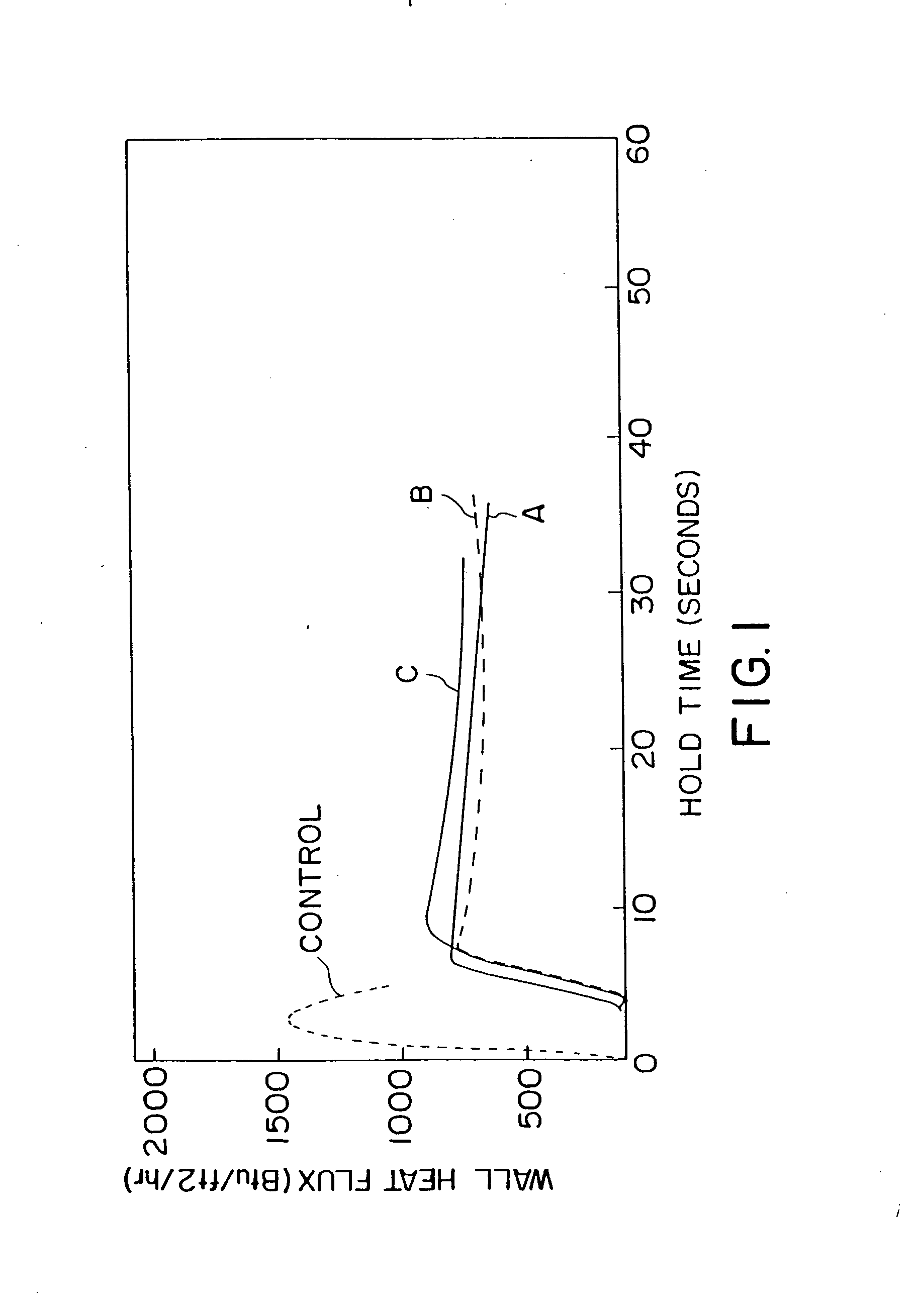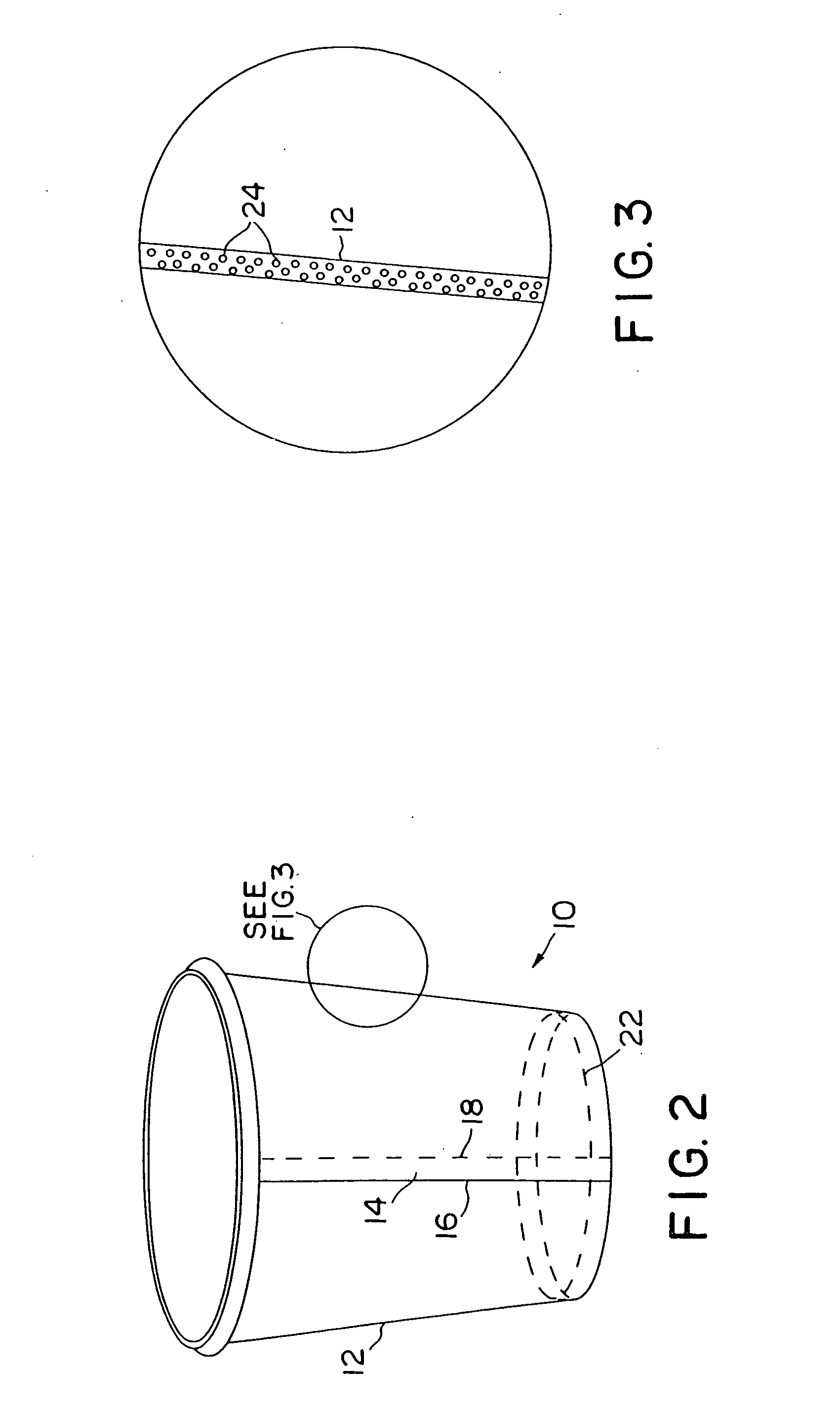Low density paperboard articles
a paperboard and low density technology, applied in the field of articles, can solve the problems of low production efficiency, low insulative properties, and low insulative properties of multi-layered and multi-walled paperboard containers, and achieve the effects of less loss in machine speed, improved insulative properties, and reduced production costs
- Summary
- Abstract
- Description
- Claims
- Application Information
AI Technical Summary
Benefits of technology
Problems solved by technology
Method used
Image
Examples
example 1
[0047] In the following example, samples of low density board containing microspheres were produced and compared to a sample marked “control” which contained no microspheres. Expandable microspheres used in the furnish are available from Expancel, Inc. of Duluth, Ga. of under the trade name EXPANCEL. The targeted caliper for the samples was 19 mil to simulate conventional cupstock calipers. After producing the boards, they were taken off-machine to an extruder and extrusion coated with low density polyethylene at a rate of 14 lbs / 3MSF to provide a barrier coating on one side having a thickness of about 1 mil. All of the samples except Sample D contained the polyethylene coating. Sample D had insufficient strength and was too brittle to be extrusion coated with polyethylene. The polyethylene-coated samples were converted to 16 oz. cups on a commercial cup machine. The insulative properties of the cups were determined by measuring the time a person could hold a cup filled with hot wat...
example 2
[0052] In the following example, two different low density board stocks were made having densities in the range of from about 6 to about 10 lb / 3MSF / mil and from furnish containing expandable microspheres. The board stock thus made was converted to 16 oz. cups. The physical properties of the board stock are shown in Table 2. All of the samples in Table 2 were coated with low density polyethylene on an extrusion line and printed on an aqueous flexo press. The coating was applied to one side of the board at about 20 mil and the printing was applied to the other side.
[0053] The coated board indicated as Sample 19 was converted to cups on a commercial machine with existing tooling. The board indicated as Sample 32 was converted to cups using prototype tooling on a commercial cup machine. The rims of the cups formed using the prototype tooling were only partially formed. Modification of the tooling will enable completely formed cups.
TABLE 2SampleSampleSamplePropertiesControl271932Softw...
example 3
[0059] In the following example, eight low density board stocks were made having densities in the range of from about 6 to about 10 lb / 3MSF / mil and from furnish containing expandable microspheres. The board stock thus made was converted to 16 oz. cups. The physical properties of the board stock are shown in Table 3. All of the samples in Table 3 were coated with low density polyethylene on an extrusion line and printed on an aqueous flexographic press. The coating was applied to one side of the board at about 1.5 mil and the printing was applied to the other side directly on the paper surface.
[0060] Samples P1 and P2 were manufactured on a pilot papermachine and extruded on a pilot extruder whereas samples C1 through to C5 were manufactured on a commercial papermachine. In both cases, the papermaking furnish used to produced these samples contained a blend of hardwood and softwood pulps and wet-end chemicals, such as starch and dry strength additives, and a suitable amount of expan...
PUM
| Property | Measurement | Unit |
|---|---|---|
| thickness | aaaaa | aaaaa |
| thickness | aaaaa | aaaaa |
| smoothness | aaaaa | aaaaa |
Abstract
Description
Claims
Application Information
 Login to View More
Login to View More - R&D
- Intellectual Property
- Life Sciences
- Materials
- Tech Scout
- Unparalleled Data Quality
- Higher Quality Content
- 60% Fewer Hallucinations
Browse by: Latest US Patents, China's latest patents, Technical Efficacy Thesaurus, Application Domain, Technology Topic, Popular Technical Reports.
© 2025 PatSnap. All rights reserved.Legal|Privacy policy|Modern Slavery Act Transparency Statement|Sitemap|About US| Contact US: help@patsnap.com



